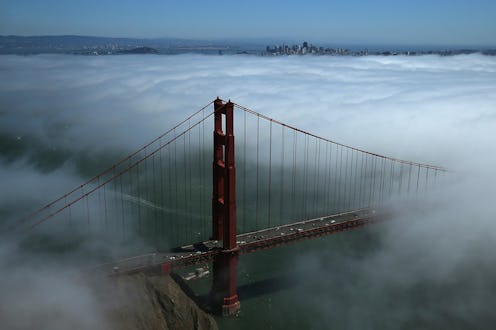News
California Voters Could Decide To Split The State Into 3 — Here's What That Actually MEANS

A Silicon Valley billionaire wants to split California into three states, and voters will have the chance to weigh in as well when they head to the polls in November. Venture capitalist Tim Draper's campaign to slice up the Golden State has gathered enough signatures to appear on the November ballot, the Los Angeles Times reports — but even if voters approve it, the effort will face a steep uphill battle.
“The reality is that for an overmatched, overstretched and overwrought state government structure, [California] is too big to succeed," a representative for the Cal 3 campaign said in a statement Tuesday. "The growing discontent with the ineffectiveness of the current state government system is apparent with the success of this first step.”
Under the proposal, California would be divided into three states with roughly equal populations. "Northern California" would encompass 40 counties in the upper half of the state, stretching from the Oregon border south to Santa Cruz; "Southern California" would include the Central Valley and San Diego, reaching right down to the Mexican border; and "California" would run from Monterey to Los Angeles, capturing the state's Central Coast.
A preliminary analysis found that politically, Draper's proposal would largely benefit Democrats: Northern California and California would become reliably blue states, while Southern California would be a swing state, effectively giving Democrats at least two more U.S. Senate seats.
This isn't the first time Draper has thrown his money behind a campaign to carve up California; he funded similar efforts in 2012 and 2014. But in doing so, he's merely following in a proud California tradition: Since the state's founding in 1849, there have been no less than 200 efforts to either split up the state or, in some cases, have it secede from the union entirely, according to the Times.
Some of those campaigns were moderately successful. Just 10 years after California was admitted into the United States, for instance, a proposal to split the state into two was approved by both houses of the state legislature, two-thirds of the state's voters and the governor. In the early 1940s, several counties in northern California and southern Oregon attempted to secede from their respective jurisdictions and form the State of Jefferson. Would-be Jeffersonians created a state flag and even elected a governor, and the effort is still alive today.
Of course, none of those campaigns were successful. There's a reason for that, and it's the same reason Draper's effort, even if voters approve it, is likely to fail as well.
The Constitution clearly says that no new state can be formed without the approval of both the original state's legislature and the federal Congress. The 1859 partition effort sputtered because Congress, preoccupied with the impending Civil War, refused to act on it. The 1941 Jefferson campaign didn't even make it to Congress, as the bombing of Pearl Harbor compelled the would-be secessionists to join the war effort and abandon the Jefferson campaign.
If California voters approved the Cal 3 ballot initiative, it would then have to be approved by both houses of the state legislature. If they did, the proposal would then have to be passed by the U.S. Senate and the House of Representatives, and then signed by President Trump. Given Congress's recent struggle to pass even relatively non-controversial bills, it's almost inconceivable that it would approve a radical proposal to create three new states.
In all likelihood, however, it won't come to that: An April poll by SurveyUSA found that only 17 percent of Californians support the Cal 3 proposal, versus 72 percent who disapprove. It's overwhelmingly likely, then, that the Golden State won't become the Golden States any time soon.